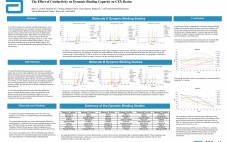Normal-flow filtration is used throughout downstream processes for biologics including depth, sterile, and viral filtration applications. Because of its ubiquity in large-scale biomanufacturing, using the most efficient normal-flow filter media area and type can lead to significant cost savings. But determining the most effective media type and area can be time consuming, labor intensive, and complicated because of a lack of specialized laboratory-scale equipment.
The equipment commonly used in this evaluation presents several disadvantages, including poor integration of multiple components from different sources (including pressure sensors, signal conditioning, data acquisition, balances, and pumps), continuous operator monitoring, and decreased portability of most systems due to their numerous components. This white paper describes how Genentech Inc. and PendoTECH collaborated on developing an integrated filter-sizing system that addresses these challenges and aids in efficient evaluation of filter media for manufacturing-scale processes.










